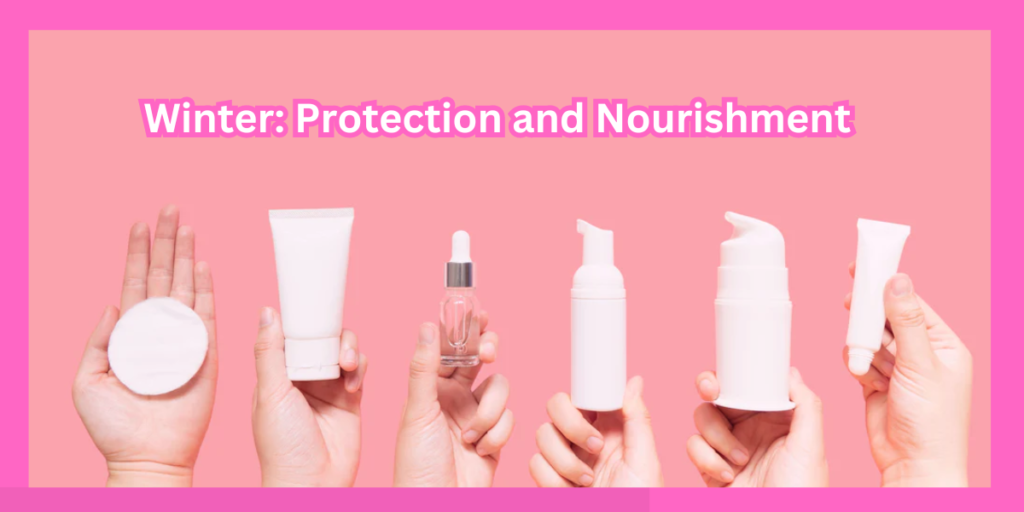Skincare is a dynamic, ever-evolving process, and just as nature shifts through its seasons, so should our skincare routines. Each season brings unique challenges and opportunities for our skin, influenced by changing weather patterns, humidity levels, and environmental conditions. Understanding and adapting to these seasonal changes allows us to maintain healthy, radiant skin year-round. Here’s a comprehensive guide to mastering seasonal skincare.
Spring: Renewal and Rejuvenation
Spring symbolizes renewal, making it the perfect time to rejuvenate your skincare routine. As temperatures begin to rise and humidity increases, your skin may start to produce more oil.
Exfoliation:
After the harsh winter months, your skin can benefit from gentle exfoliation to remove dead skin cells and promote cell turnover. Opt for a mild exfoliator that won’t irritate your skin.
Light Moisturizers:
Transition from heavy, winter-grade moisturizers to lighter, hydrating lotions or gels. Look for products that contain hyaluronic acid or glycerin to maintain hydration without feeling greasy.
Sun Protection:
With more daylight hours and increased outdoor activities, it’s crucial to ramp up your sun protection. A broad-spectrum SPF 30 or higher should become a staple in your daily routine, protecting against both UVA and UVB rays.
Allergy Considerations:
Spring is also allergy season, which can cause skin irritation. Use soothing ingredients like aloe vera and chamomile to calm any redness or inflammation.
Summer: Hydration and Protection
Summer brings heat, humidity, and increased sun exposure, all of which can impact your skin significantly. The primary focus during these months should be on hydration and protection.
Sunscreen:
This cannot be overstressed. Apply a broad-spectrum sunscreen with at least SPF 30 every morning, and reapply every two hours if you’re spending time outdoors. Don’t forget often-missed areas like the ears, neck, and the tops of your feet.
Hydration:
Increased sweating can lead to dehydration. Use lightweight, non-comedogenic moisturizers that won’t clog your pores. Aloe vera-based products are great for their cooling and hydrating properties.
Cleansing:
Summer activities often lead to increased sweat and oil production. Cleanse your face twice daily with a gentle, foaming cleanser to remove impurities without stripping your skin of its natural oils.
Antioxidants:
Incorporate antioxidants like Vitamin C into your routine to protect against environmental damage and promote a bright, even complexion.
Autumn: Repair and Transition
Autumn is a transitional season where the skin starts to recover from summer damage and prepare for the cold, dry winter months. This is a time for repair and adjustment.
Moisture Boost:
Start incorporating richer creams into your routine to combat the decreasing humidity. Ingredients like ceramides and shea butter help to strengthen the skin barrier and retain moisture.
Repair Serums:
Post-summer, your skin might show signs of sun damage. Use serums with ingredients like retinoids and niacinamide to repair and renew the skin.
Exfoliation:
As the weather cools, the skin’s natural exfoliation process slows down. Use AHA (alpha hydroxy acids) or BHA (beta hydroxy acids) exfoliants to keep your skin smooth and clear.
Sun Protection:
Continue using sunscreen daily. Even though the sun’s intensity diminishes, UV rays are still potent enough to cause damage.
Winter: Protection and Nourishment
Winter brings cold, dry air that can be harsh on your skin. The focus during this season should be on deep hydration and protection against the elements.
Heavy Moisturizers:
Switch to thicker, more emollient moisturizers that create a protective barrier on your skin. Ingredients like hyaluronic acid, glycerin, and squalane are excellent for keeping your skin hydrated.
Humidifiers:
Use a humidifier in your home to add moisture back into the air, helping to prevent your skin from drying out.
Gentle Cleansing:
Opt for creamy or oil-based cleansers that clean without stripping your skin’s natural oils. Avoid hot water when washing your face, as it can further dry out your skin.
Protective Barriers:
Use balms and ointments on vulnerable areas like lips, hands, and around the eyes to protect against wind and cold.
Layering:
Just as you layer your clothing, layer your skincare products. Start with serums, then apply creams, and finish with oils to lock in moisture.
General Tips for All Seasons
Listen to Your Skin:
Your skin’s needs can change with the seasons and your lifestyle, diet, and hormonal changes. Pay attention to how your skin feels and adjust your routine accordingly.
Hydrate:
Drinking plenty of water is crucial for maintaining skin hydration and overall health.
Balanced Diet:
A diet rich in fruits, vegetables, and omega-3 fatty acids supports skin health from the inside out.
Avoid Overcomplicating:
Stick to a simple routine that works for you. Overloading your skin with too many products can lead to irritation and breakouts.
Final Thought:
By understanding the specific needs of your skin through each season and adjusting your skincare routine accordingly, you can maintain a healthy, glowing complexion all year round. Seasonal skincare is not just about changing products but also about adopting a mindful approach to how environmental factors influence your skin’s health.







